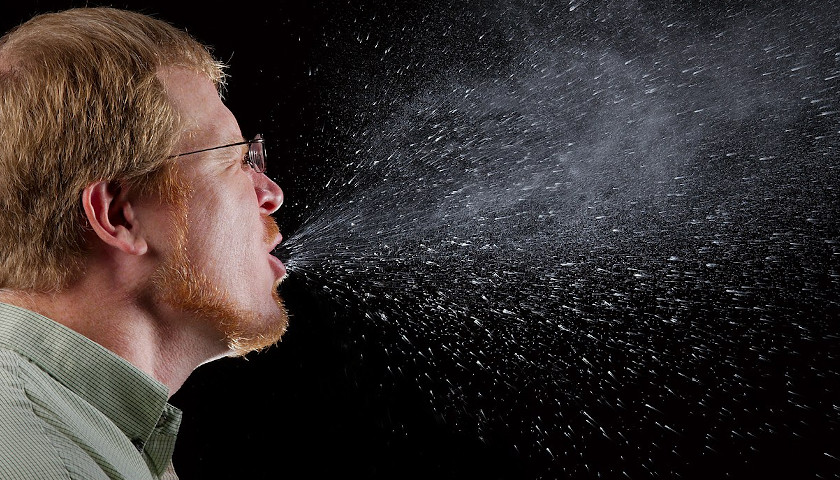The Environmental Protection Agency (EPA) will allow Tennessee to use technology that reportedly kills over 98 percent of airborne COVID-19 particles. The emergency exemption request was approved under Section 18 of the Federal Insecticide, Fungicide, and Rodenticide Act (FIFRA).
The antiviral air treatment, Grignard Pure, is composed of Triethylene Glycol (TEG) vapor and nanoparticles that permeate and kill the COVID-19 virus particles by disrupting the protein and membrane structures. The EPA confirmed prior independent lab reports that the treatment kills over 98 percent of COVID-19 particles.
Both the toxicology risk assessments and history reports for Grignard Pure affirm that the treatment is nontoxic and causes no immediate or long-term adverse health effects. Similar products produced by Grignard, the creator of Grignard Pure, have been widely used in a variety of museums and entertainment venues for over two decades.
The technology would be used in areas where individuals can’t follow public health guidelines completely. In addition to public buildings such as government facilities, EPA specifically noted that the exemption would extend to break rooms, locker rooms, bathrooms, lobbies, elevators, eating areas, food preparation areas, intrastate transportation, and food processing facilities.
Although reports indicate that the antiviral product eradicates 98 percent of airborne COVID-19 particles, the EPA clarified that Grignard Pure’s efficacy wouldn’t cease the need for masks, social distancing, or implementing other forms of ventilation within a space.
In an interview with The Tennessee Star, Grignard Managing Director Etienne Grignard shared that there has been years of research poured into this technology. In 2015, the company invented the technology during a health and safety analysis but nothing at the time necessitated its immediate usage. The COVID-19 pandemic changed that.
“There’s a lot of accomplishments that happened here. There’s a new category that’s been developed for antimicrobial use. The previous technologies were all for hard surface disinfection,” stated Grignard. “The EPA has gone through our website and materials. There are no claims that aren’t 100 percent evaluated.”
As for the necessity of posted signage to notify individuals of spaces containing Grignard Pure, Grignard explained that it helps keep the public informed.
“There’s anecdotal evidence that at levels [of the ingredients] that are much, much higher, to a small percentage of the population [they] may be irritants. You do have people that have heightened sensitivity – but they can simply step outside the environment,” stated Grignard. “It’s also for notification that the product is in use. If there are any complaints or anything that people don’t like about it, we want to know, and we want the EPA to know, too.”
In addition to Tennessee, Georgia will be the only other state with permission to use Grignard Pure. Grignard told The Star that there were several reasons why that turned out to be the case. The EPA administered its approval based on an emergency exemption, and states had to be willing to implement the technology.
“It takes courage to go first. There are 17 states that want to be number two [on the list.] When you see the data and the science, there are thousands and thousands of pages of research – there are no data gaps,” explained Grignard. “It’s a state by state process. We’re currently in the process with the EPA on [obtaining] a national approval.”
Grignard noted that their intent with Grignard Pure is – and always has been – to improve upon the current climate of the pandemic. He commended the collective science and engineering efforts of the researchers involved: they worked without compensation, only desiring to contribute to “an altruistic cause.”
The company has a storied reputation in its technological advances. Its foundations include Victor Grignard, the famed recipient of the Nobel Prize in Chemistry for his discovery of the Grignard reagent. Additionally, the company boasts nearly 60 years collectively in equipment and products for industry, theater, and the home.
Grignard explained that they anticipate this latest technology to be deployed in around 6 weeks’ time.
– – –
Corinne Murdock is a reporter at The Tennessee Star and the Star News Network. Follow her latest on Twitter, or email tips to [email protected].






This is unacceptable and for what benefit, it’s not like this permits society to return to any state of normal. Perhaps, the better solution is increased immune health and ignoring the mass marketers of products that purport to save that later are found out to harm.
The message I get from this is that all must bow at the shrine of the nanny state EPA.
Is this O’bidens way of destroying state and federal infrastructure so they can then destroy them and replace them with green huts?
“…the EPA clarified that Grignard Pure’s efficacy wouldn’t cease the need for masks, social distancing, or implementing other forms of ventilation within a space.”
So it is just as ineffective and a waste of money as Gates/Fauci vaccines then. No immunity conferred, doesn’t prevent spread or infection. Will Grgnard also have complete protection of the government for any damages their airborne spray cause like the vaccine makers enjoy?
“…nanoparticles that permeate and kill the COVID-19 virus particles by disrupting the protein and membrane structures.” Here we go again, playing God!
Do we really understand the long term impact of “nanoparticles disrupting protein and membrane structures”? And what do these nanoparticles “do” when there aren’t any Covid viruses to “disrupt”?
I’m waiting for someone, probably with the last name of Gates, to suggest plastic bags and twine. Rumor has it that when placed strategically around certain body parts with sufficient tension, all virus particles will be contained and eliminated!
https://awakecanada.org/epa-approves-chemical-air-treatment-against-covid-despite-known-health-hazards/
Look at the effects of this crap. How does this get approved??
So now we can expect to inhale brake fluid when we go into a public building.